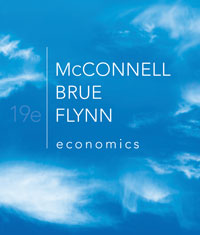1 A) is the same for everyone, even if its usefulness differs from person to person B) is a measure of the product's usefulness C) typically increases at a constant rate D) typically increases at a decreasing rate 2 <a onClick="window.open('/olcweb/cgi/pluginpop.cgi?it=jpg::::/sites/dl/free/0217511447/883733/ch06_q2.jpg','popWin', 'width=NaN,height=NaN,resizable,scrollbars');" href="#"><img valign="absmiddle" height="16" width="16" border="0" src="/olcweb/styles/shared/linkicons/image.gif"> (17.0K)</a> A) 7 units of J and 3 units of K B) 5 units of J and 4 units of K C) 3 units of J and 5 units of K D) 1 units of J and 6 units of K 3 A) law of diminishing marginal utility B) income effect C) substitution effect D) law of increasing total utility 4 A) she is maximizing total utility B) she should purchase relatively more X C) she should purchase relatively more Y D) nothing about whether she is maximizing total utility 5 A) the marginal utility of each good is the same B) the marginal utility of an iced coffee is half that of a candy bar C) the marginal utility of an iced coffee is twice that of a candy bar D) the total utility of an iced coffee is half that of a candy bar 6 A) 65 units of utility B) 20 units of utility C) 15 units of utility D) unknown, since Kevin's utility does not conform to the usual rules 7 A) will have a higher marginal utility of income B) will have a higher total utility of income C) will consume fewer time-intensive commodities D) will consume more time-intensive commodities 8 A) Joan's demand for wine is inelastic B) Joan's demand for wine is downsloping C) an decrease in the price of wine will decrease Joan's total utility D) a decrease in the price of wine will increase Joan's marginal utility 9 A) marginal utility of both apples and oranges will decrease B) marginal utility of both apples and oranges will increase C) marginal utility of apples will increase and the marginal utility of oranges will decrease D) marginal utility of apples will decrease and the marginal utility of oranges will increase 10 A) the framing effect B) mental accounting C) anchoring D) the endowment effect





